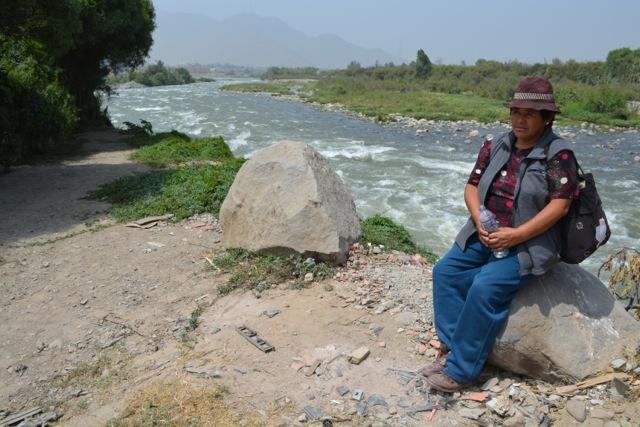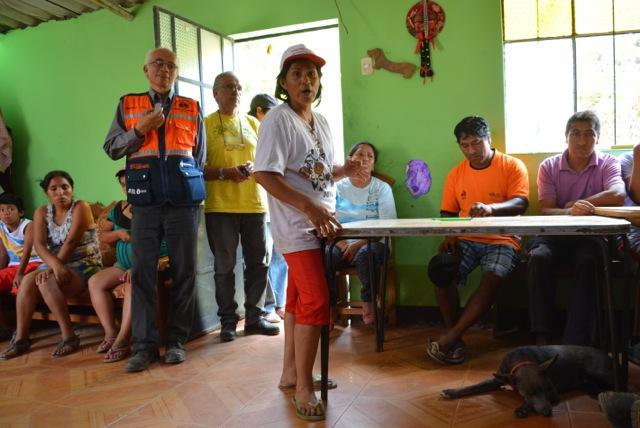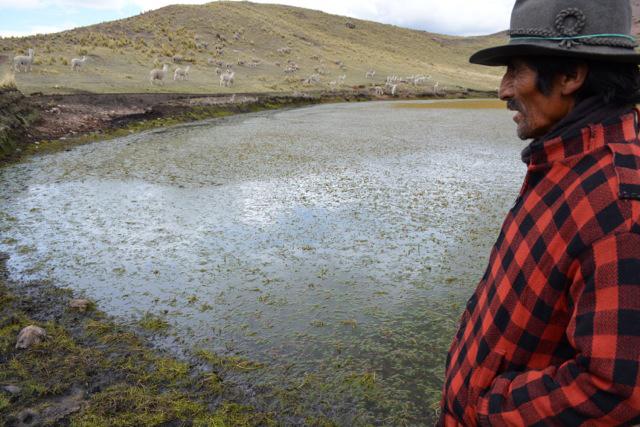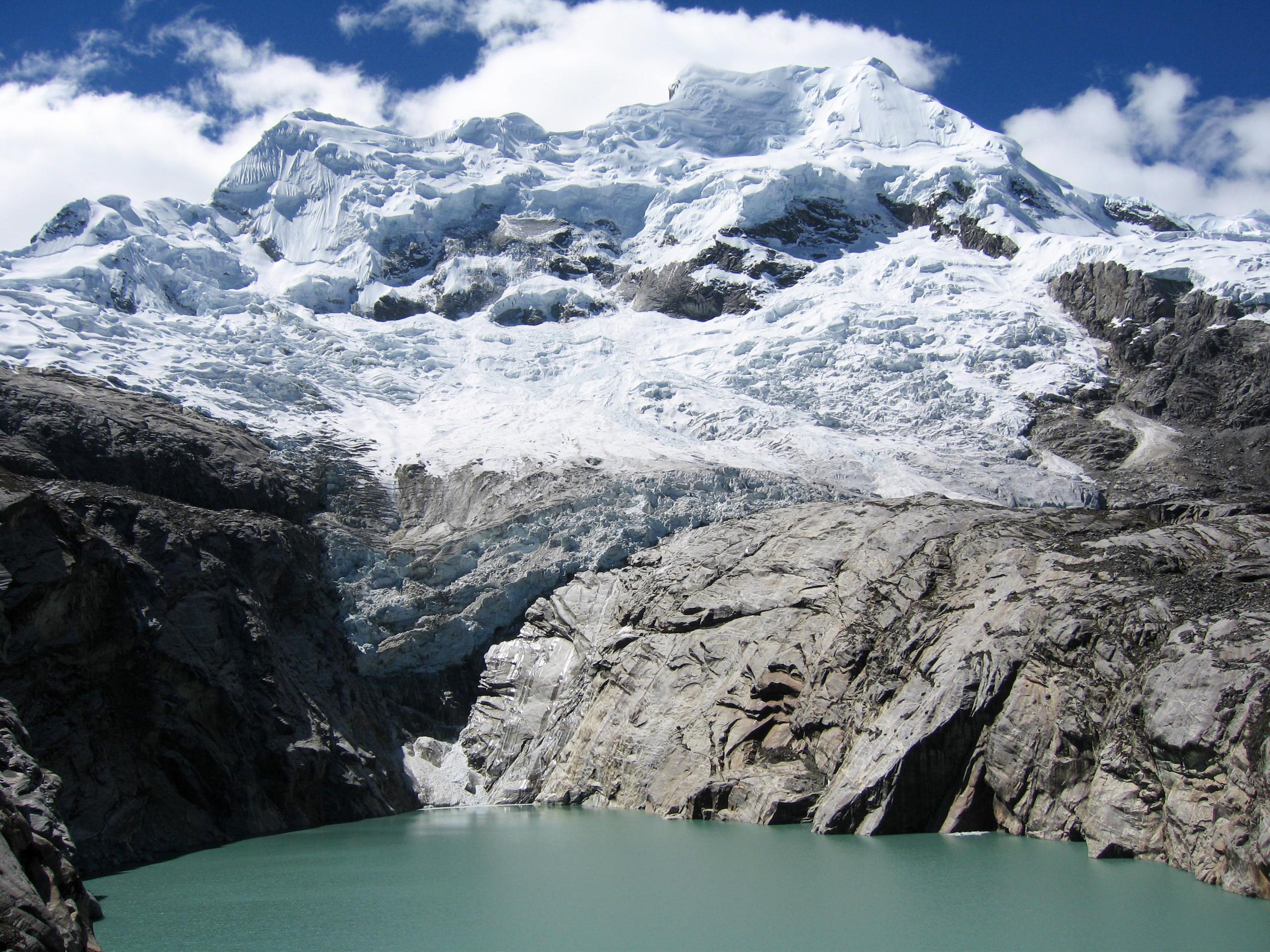Private-sector climate support for El Niño flooding

The Zurich Insurance Group is helping Peruvian communities deal with regular severe flooding. It is one example of the role of the private sector in addressing climate change – part of the current talks in Lima on “climate finance”.
About an hour outside the Peruvian capital, in Chaclacayo, local leader Isolina Gongora describes the fear of a natural disaster. This is shared by residents in her community living at a crossroads between the Rimac River, which flows just a couple of metres below, and a regular landslide path.
“We don’t sleep. We always need to be alert, so that in the case of an event we can start running, knocking on neighbours’ doors,” she says, explaining the many times she has had to react to severe flooding.
During the floods, which occur generally during the first months of the year, huge waves of water may suddenly cascade down the Rimac, “talking river” in the native language, Quechua.
“The houses shake when rocks are pushed down the river. It’s horrible. The river brings rubbish – and sometimes dead people – with it. We are never free. If there’s a flood, we could be trapped because of the train and the huaycos,” Gongora says, using the Quechua name for landslides.
A railway line, used for shipping minerals from the Andes to the port city of Callao, runs a few steps from the houses.
The Zurich Insurance Group, noting how floods cause more losses than all other natural disasters, began a programme in several countries, including Peru, to assist communities like this one with flood resilience.
El Niño
In Chaclacayo and other riverside communities along the Rimac, severe flooding is caused by the El Niño phenomenonExternal link and has occurred at ever-shorter intervals in recent decades.
The annual report of the World Meteorological OrganizationExternal link (WMO), released last week to coincide with the climate change talks in Lima, says flooding, as well as droughts and cyclones, have been strong worldwide this year. It also reported 2014 to be the hottest year on record.
“The oceans have been absorbing all the global heat-rises, the heat is going to the bottom of oceans, and that is messing up the systems,” explains Colin McQuistan, climate change advisor with Practical Action, which partners with Zurich in Peru.
In Peru, fisheries, an important industry in the coastal region, are seriously affected by El Niño, while middle and lower watershed areas, such as Chaclacayo, experience abundant rainfall, causing mudslides and flooding rivers.
Flood damage
Peru’s National Disaster Risk Estimation, Prevention and Reduction Center registered nearly 2,400 floods between 2003 and 2011.
The two strongest El Niño events in 1982-3 and 1997-98 caused a combined $6.8 billion (CHF6.6 billion) in damages and affected millions of people.
Adaptation through resilience
Along the Rimac and in the northern coastal town of Piura, Zurich’s flood resilience programme recently began to inform, train and generally empower people in order to prepare and protect themselves from flood risk.
Weather training, developing evacuation drills and early warning systems are part of the programme, and organised community associations are encouraged to work with local authorities.
“There was too much money being spent on post-event relief, instead of pre-event reduction measures,” Linda Freiner, Zurich’s programme manager, tells swissinfo.ch.
Zurich’s programme in Peru – as well as in Mexico, Nepal and Indonesia – was one of the winners of this year’s Lighthouse Activity AwardsExternal link, bestowed by the United Nations climate change secretariat before the annual summit in Lima last week. The prize, the agency said, aims to “shine a light on some of the best examples of climate solutions, to inspire increased climate action around the world”.
Since the start of the COP20 talksExternal link in the Peruvian capital, delegates have spoken widely about financial funds that will be needed to adapt and mitigate the effects of climate change in the coming years, to keep global temperatures from rising by two degrees Celsius.
Engaging the private sector
“The future of the COP is to allow different sectors to work together, and that will be a strong outcome of Lima,” said Manuel Pulgar-Vidal, Peru’s environment minister and president of the climate change talks, last week.
In addition to the Green Climate FundExternal link, which so far has received government pledges of $10 billion (CHF9.75 billion), and the UNFCCC’s Long Term FinancingExternal link, which aims to raise $100 billion annually by 2020, private sector spending is expected to represent the lion’s share of global climate finance.
“We are talking about $90 trillion that will go into infrastructure in the next 15 years,” UNFCCC secretary-general Christiana Figueres told journalists at the Lima conference.
Mark Burrows, managing director of global investment banking at Credit Suisse, identified two main processes of raising funds for green development projects: government encouragement, such as tax incentives, or through green bondsExternal link, which he expects to grow exponentially.
Financial news agency Bloomberg says that the fast-growing market in green bonds may surpass $40 billion in 2014.
“When we speak about green development, we need to think about being green not only from an environmental perspective, but also green in terms of dollars,” said Gustavo Suarez de Freitas, forest conservation programme director at the Peruvian Environment Ministry. “Nature preservation also needs to generate wealth.”

A study carried out by the Swiss government with the support of the University of Zurich estimated that at least CHF200-800 million a year was mobilised by the private sector in Switzerland in 2011 for mitigating and adapting to climate change.
Global issue
Back along the Rimac’s riverbanks, residents wonder how strong the coming rainy season will be, while Isolina Gongora hopes she will receive a call from people living upstream if water levels rise dramatically, so she can alert neighbours.
Finally, she shares her thoughts about the climate talks down the valley in Lima. “I hope that everyone – ministers, professionals and represented communities – becomes aware of what happens at the bottom and look at the reality. The planet is totally affected”.
“As a leader in my community, I do my part in making sure that things don’t continue as in the past, that people don’t throw rubbish into nature, because everything that one does against the environment is harming our planet.”

In compliance with the JTI standards
More: SWI swissinfo.ch certified by the Journalism Trust Initiative












You can find an overview of ongoing debates with our journalists here . Please join us!
If you want to start a conversation about a topic raised in this article or want to report factual errors, email us at english@swissinfo.ch.